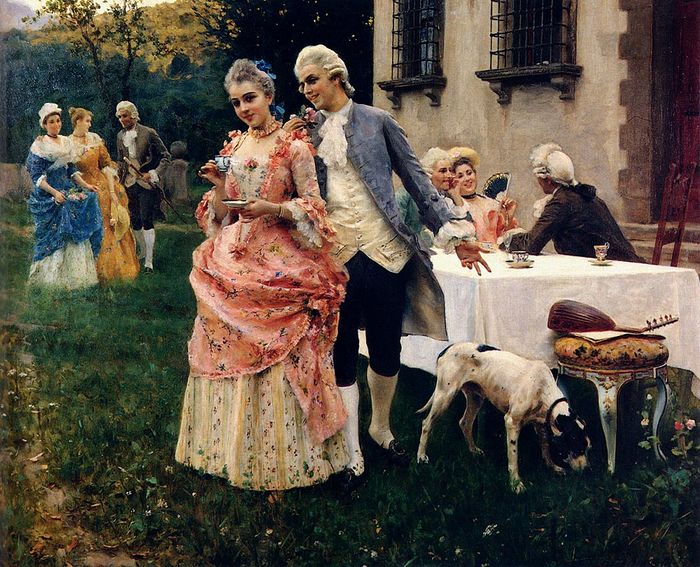Red lipstick and high heels: do men have their own power formula?
Sofia Iudintseva examines why men do not have anything equivalent to heels and a red lip

Stiletto heels. Red lips. A glance sharp enough to cut glass. She doesn’t need to speak. The outfit does. And everyone listens. Carried through decades, this formula became a universal sign of power, but why the heels and red lips? Starting from the 1920s casual feminine dressing finally escaped rigid boundaries dictated by the patriarchy. However only in the mid-20th century this combination crystallized as a formula primarily by increased popularity of film noir. The recognisable image of a femme fatale, hyper-feminine, sexualised, dramatic but powerful and smart woman, brought femininity out of the Madonna-Mistress duality, creating a universal combination representing both power and appeal, which was what multiple women wanted to show. Today, the combo is both a cliché and a classic. It’s been reclaimed, subverted, memed, and still – it works. It turns heads, shifts posture, reshapes the mouth and the walk. It transforms. And transformation, for women especially, has always been a form of power.
It would be wrong to state that the power formula for women consists only of high heels and red lipstick, as in reality it usually works in tandem with a well-curated outfit: a striking dress, a tailored suit, or something equally polished and glamorous. As otherwise it would not give a desired effect on the public. So, when we talk about power formulas for both women and men, we’re not referring to the whole outfit but rather to the combination of accessories which becomes a finishing touch and seals the impression. So when looking for a male power formula we assume that he is already wearing a decent elegant outfit and is looking only for the last detail.
“Films create a direct visual link between a character’s appearance and their personality”
Obviously, the mass media – and Hollywood in particular – were the ones who established high heels and red lipstick as a power formula in public consciousness by being a mirror and the lead for the social tendencies and thoughts especially in the 20th century. So, to find a male counterpart, we should also turn to striking cinematic imagery. Films create a direct visual link between a character’s appearance and their personality, and directors tend to rely on familiar style formulas to amplify a male character’s power on screen. But what are the qualities a man wants to be associated with when he power-dresses? I’ll assume that power, authority, intelligence, masculinity, stability and wealth. The first type of men with these qualities who come to mind are mafiosos or any other type of higher status gangsters: Don Carleone, Danny Ocean, Jules and Vincent from Pulp Fiction and most of the characters from Guy Ritchie and Martin Scorsese movies.
Unfortunately male fashion is much narrower than female, so looking through the accessories worn by powerful male figures in cinematography would bring us to the conclusion. They wear expensive watches, ties, bow ties, pocket squares, gloves, neckerchiefs, glasses, signet rings, hats and sunglasses, also a three-piece suit usually looks more collected. Interestingly, attributes of the criminal past such as cane, eye patch, or metal dental plate also emphasize showing seriousness and danger. Most of these details aim to cover male body even more, so in contrast to the female power formula which is in large part about attractiveness, male counterpart is more about stealth and subtle authority, which explains sunglasses, hats, and gloves as major attributes of a powerful man’s outfit. The criminal nature of male power formula could be explained by the qualities inherent in the criminal authority, as they are the most respected in the patriarchal world, so most of the subtle signs of the high status in the criminal hierarchy are perceived in male fashion as signs of power.
“And through the male gaze, women were rarely seen as leaders, but as objects of desire”
Why does power mean such different things for men and women? To establish a universal power formula takes time – generations, even – because the public mind is stubborn, slow to shift, and deeply resistant to change. That’s why, even today, fashion combinations as visually charged as red lipstick and high heels still carry meanings shaped by the conservative values of the 20th century. In a patriarchal world, power – for both men and women – has always been measured by a man’s standard: the ability to command respect from other men. And through the male gaze, women were rarely seen as leaders, but as objects of desire. Their power, therefore, was framed as the ability to manipulate men through sexuality and visual appeal. This is especially clear in noir films, where female characters are often the most intelligent and calculating figures — yet they achieve their goals by exploiting men’s weaknesses. Their hyper-sexualised, alluring outfits aren’t just seductive – they are weapons. Similarly, for men, power still means dominance over other men – which is why it’s often expressed through markers of physical strength, danger, status, and wealth. The ultimate symbol of that? The criminal authority figure – a man feared not just by his peers, but even by the law itself.
It seems that there is no such established accurate power formula for men which could impress like high heels and red lipstick, as male fashion is more pragmatic and practical. What is more, contemporary established fashion combinations are mostly shaped by a patriarchy where men’s appearance is undervalued in comparison to women’s. However, if trying to crystalize a universal combo which would deliver a strong and unambiguous message, I think it would be a fedora hat and black sunglasses as it demonstrates stealth, elegance and authority and is associated with powerful male Hollywood characters. Nevertheless, due to the difference in origins of female and male power formulas, hat and sunglasses could work only in tandem with existing authority and status of the one who decides to wear it.
 News / Cambridge students accused of ‘gleeful’ racist hate crime4 December 2025
News / Cambridge students accused of ‘gleeful’ racist hate crime4 December 2025 News / Uni redundancy consultation ‘falls short of legal duties’, unions say6 December 2025
News / Uni redundancy consultation ‘falls short of legal duties’, unions say6 December 2025 News / Churchill announces June Event in place of May Ball3 December 2025
News / Churchill announces June Event in place of May Ball3 December 2025 News / Cambridge cosies up to Reform UK30 November 2025
News / Cambridge cosies up to Reform UK30 November 2025 Comment / Don’t get lost in the Bermuda Triangle of job hunting 24 November 2025
Comment / Don’t get lost in the Bermuda Triangle of job hunting 24 November 2025









